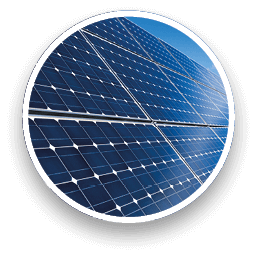Solar Pumping
We have vast experience delivering the right variable frequency drives into Solar Pumping applications.
A typical solar pumping system contains a solar array, which converts sunlight into electricity, system; controllers, which control the array and the pump; an electric motor, which drives the pump; and a water pump, which moves water to where it is required.
VFDs allow solar PV to be used for standard AC industrial motors, doing away with the need for dedicated DC solar pumps that are a more specialised and expensive product. AC induction motors are usually easier and cheaper to maintain or replace. Using VFDs it is also possible to operate motors in a change over configuration, with solar PV used in combination with either diesel generators or the commercial electric grid.
VFDs offer high efficiency conversion from DC to AC power with very little electrical loss and is therefore the ideal control solution for any application isolated from the commercial grid where variable motor speed can be tolerated.
-
Reducing surge current at start up
Using a VFD it is possible to set a ramp up time to give the motor a reduced starting voltage until it gains enough momentum before full power is applied. The pump can also have a controlled stop by programming a rate of deceleration over a period of time. This reduces the mechanical wear of the motor as well as the start-up loads on the PV array.
-

Reducing energy use
A VFD can control the speed of the pump to maximise energy efficiency, a small drop in pump speed delivering significantly reduced energy usage. The higher the solar radiation the faster the motor runs (limited only by its nameplate speed). In a lower solar radiation scenario, the motor runs on a lower frequency and with lower speeds yet with high torque and efficiency. The VFD allows a pump to keep operating at slower speeds in cloudy weather or during reduced solar radiation.
-

Improved pump control
A proportional-integral-derivative (PID) allows a VFD to get feedback from a flow or level sensor in order to maintain a desired flow rate form a pump. This provides a reliable, closed loop control system.
Sumitomo Drive Technologies - products for Solar Pumping














